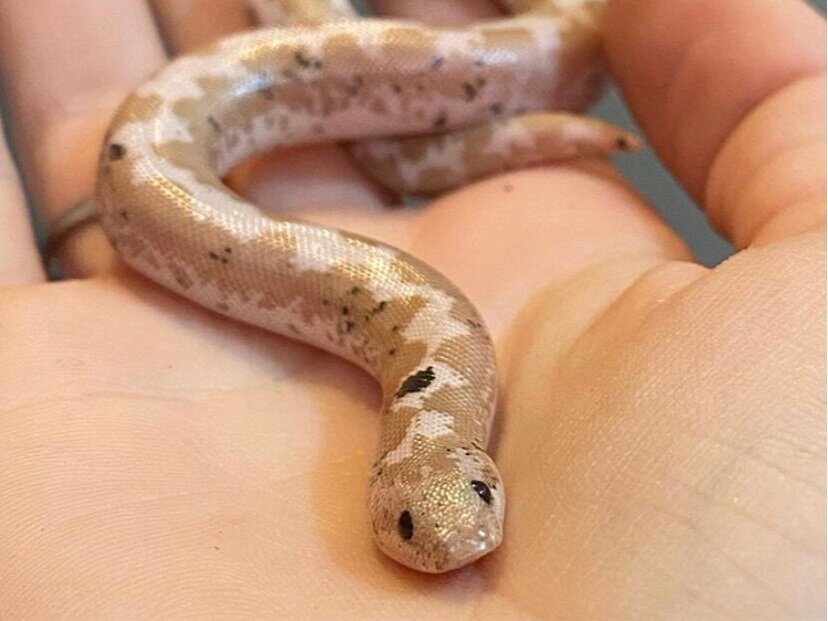Kenyan Sand Boa Care Tips
Kenyan Sand Boa - Gongylophis colubrinus
About
These snakes may remind you of the beetlejuice sand monster- and that’s cool because these species reminds us of that, too. Thankfully these little boas only grow to a whopping 2-3’ maximum- making them much cuter and way less scary than that thing. They originate from Kenya, Egypt, Sudan, and most of East Africa. Rufescens sand boas are a different species that have been bred into Kenyans Sand Boas to create patterns like tiger, stripe, and other cool morphs. These snakes have a slightly shorter stockier build. It’s hard to identify hybrids now unless you really trust the breeder. Thankfully, these hybrids have the same care guidelines and are pretty much the same.
ENCLOSURE
Hatchling sand boas can be started in a 5 or 10 gallon terrarium with a locking screen lid. Adults may need a 20 or even 30 gallon tank. We recommend keeping the decorations simple but the substrate deep as these creatures are a burrowing species. Heavy decorations could put your pet at risk of being crushed, so light branches and greenery is the best bet. Placing small bowls upside down in the substrate or similar type hides can be a great safe spot for your boa. Buried cork rounds and half logs make great hides as well. Despite the name, sand doesn’t always make the best substrate for these snakes as it poses a major impaction threat. To avoid that stick to substrates like chopped aspen (our favorite!), coconut mulch, or shredded/recycled newspaper. Babies should be started out on paper towels to avoid risking impaction and maintain sanitation. Once moved to a substrate, start with 1-2” substrate for juveniles and 2-4” for adults.
PARAMETERS
Sand boas like warm temperatures so keep the warm side of the enclosure around 90 and the cool side in the low 80’s. Night time temperatures can drop down as low as 75 without need for supplemental heat. Aim to keep your humidity around 40% with a boost whenever shedding time comes around. This can be accomplished by lightly misting the enclosure when you notice your snake “in blue”.
DIET
Rodents no larger than the girth of the snake should be fed to these boas. It’s best to remove the snake from the enclosure and feed them in a separate container. This will keep the snake from accidentally ingesting substrate when it pulls the rodent under to eat it. Baby sand boas should start on live pinky mice then switch to frozen/thawed (f/t) over time. Adult males will eat large hoppers while adult females eat jumbo sized mice. You’ll want to graduate the size based on the girth of the snake and the width of its head. Hatchlings and juveniles will eat weekly until they reach adulthood when they start to slow a little. Males tend to eat less than females so feed males every 10-14 days but females should be fed every week.
TEMPERAMENT
Remember that this snake spends most of it’s time underground in the dark. It might be spooked and partially blinded when you suddenly bring it out to the light! They may be jumpy at first but will calm down pretty quickly. Sand boas are known to be some of the most docile pet snakes you can own. You can expect them to spend their time skimming the surface of your hand trying to find a space to burrow in, and poking their head between your fingers.
COMMON HEALTH PROBLEMS
These snakes most commonly deal with blister disease, mouth rot, and retained shed. All of these can be prevented with proper care and husbandry. Blister disease is caused by a damp and dirty environment, mouth rot is caused by a dirty environment and retained shed is caused by improper humidity control. Staying on top of your enclosures cleanliness and husbandry is extremely important.
